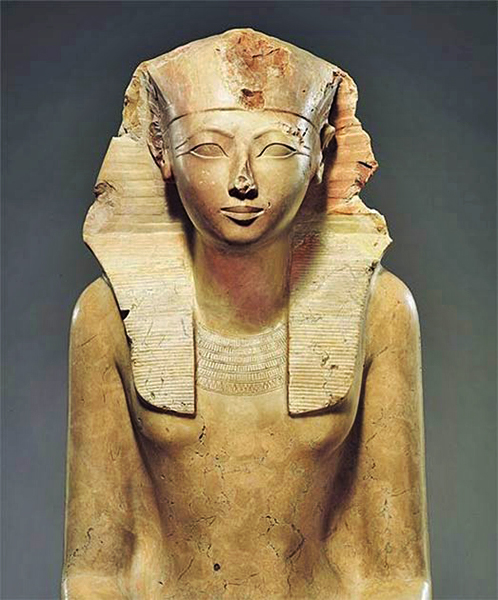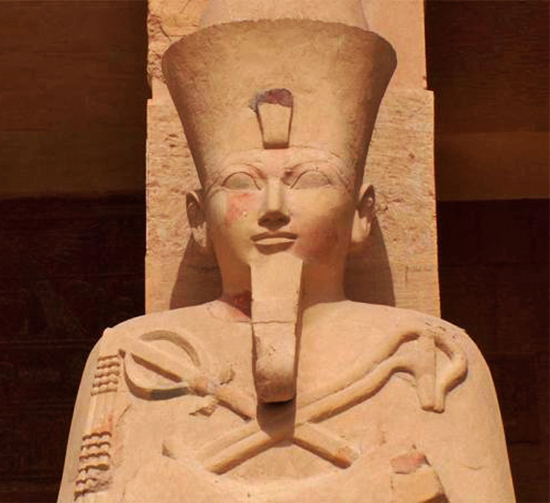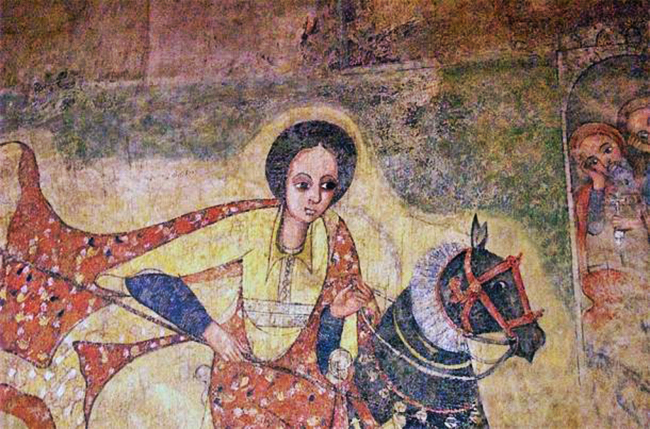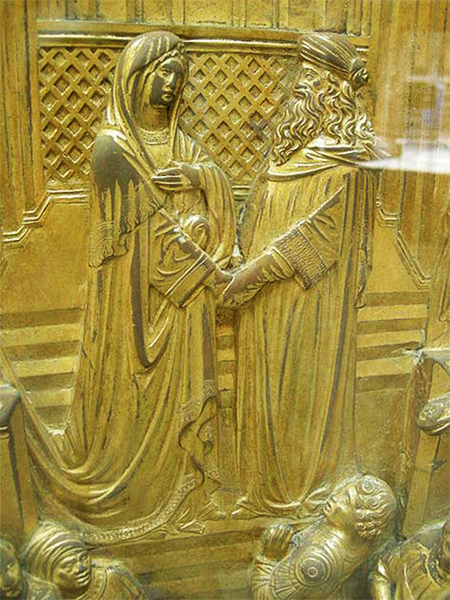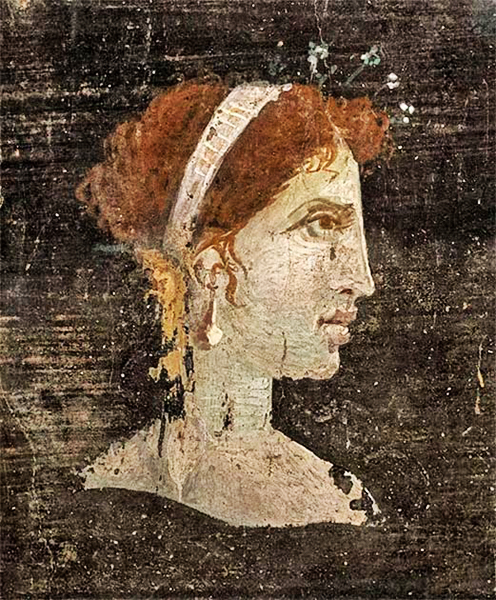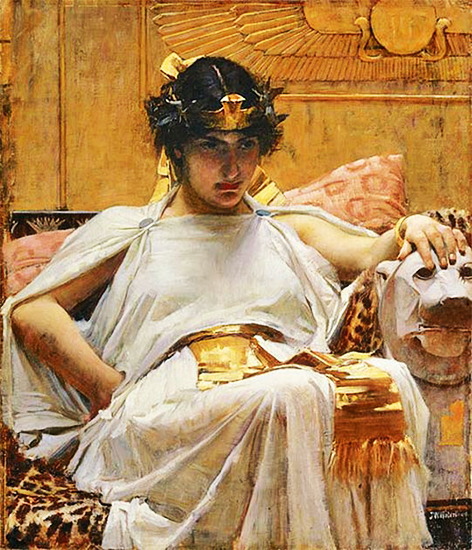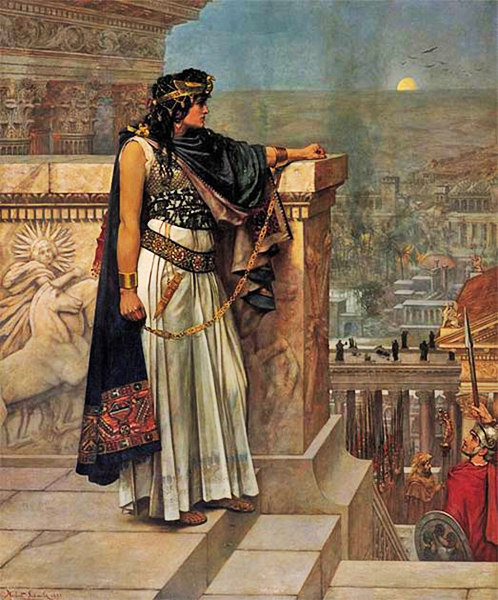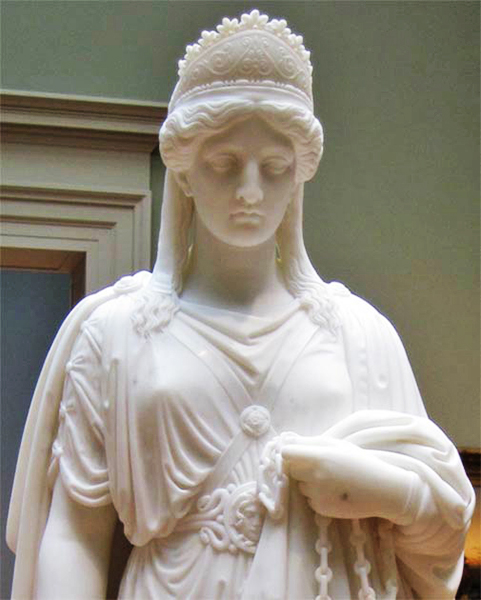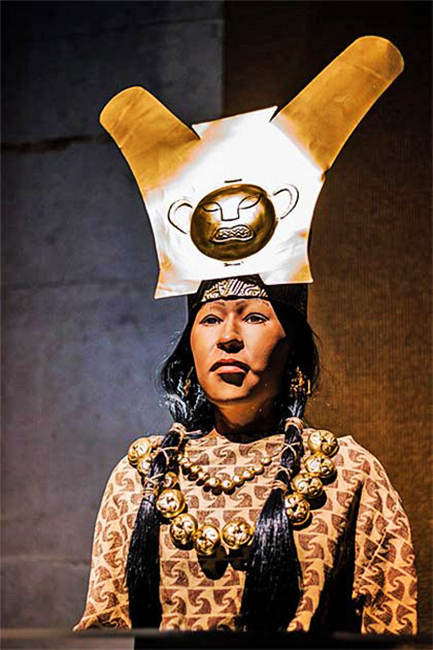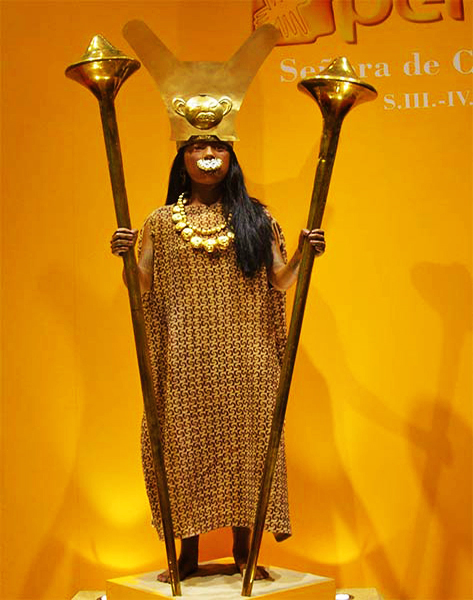|
from Ancient-Origins Website
Many famous queens have altered the course of history. Source: Atelier Sommerland / Adobe Stock
Queens in their own right, their reigns are characterized by progress, wealth and prosperity, intellectual mining, civil construction, military genius, and even human sacrifice.
A walk through 2000 years of history delivers some of the most outstanding and famous queens, who left a legacy as worthy and impressive as the monuments they had constructed as their final tombs.
She was the only child of the pharaoh and his first wife and if the lineage of rule was passed on to daughters, she would have been first in line to inherit the royal crown at the age of 12 when her father died.
However, Hatshepsut was married to her half-brother Thutmose II, to become his principal wife and queen.
The gods of Egypt had allegedly decreed that the king's role could never be fulfilled by a woman.
The Egyptian pantheon consisted of 24 Egyptian goddesses, 26 male deities, and six androgynous gods. The most powerful Egyptian goddess was Isis, and then there was Hathor, Bastet, Maat, Nut, and many more.
Most probably, the 'decree of the
gods' was imposed by male priests and politicians.
Hatshepsut.
( CC0)
Possibly Hatshepsut reasoned that the 24 female deities would back
her up, so by 1437 BC she defied the decree and had the nemes crown
of Pharaoh placed firmly on her head.
She is depicted as wearing male attire and even sporting a false male beard.
Traditionally, statues of men were painted with a deep red
pigment and women with a lighter yellow pigment, but interestingly,
statues of this ruler were painted a unique orange skin tone, a
fusion between the two colors.
Her major achievement was to re-establish the trade routes that had been disrupted during the Hyksos occupation of Egypt during the Second Intermediate Period (1650-1550 BC), between the end of the Middle Kingdom and the start of the New Kingdom.
Trading with the
Land of
Punt brought wealth and prosperity to Egypt.
She planted myrrh trees, which she had secured from Punt, at this complex.
Regarding her foreign relations policy, she mostly
maintained diplomatic, peaceful relations, but she also led military
campaigns into Nubia and Canaan, and she sent raiding parties to
Byblos and Sinai.
at her temple at Deir el-Bahri.
(sootra
/Adobe Stock)
Her stepson Thutmose III tried to eradicate all evidence of her rule and it was only in 1822 AD, when hieroglyphs on the walls of Deir el-Bahri were decoded, that her existence and astonishing rule was revealed.
While
the mummies of Thutmose I, II, and III were all discovered at DB320,
in the Valley of the Kings, Hatshepsut was nowhere to be found.
Modern scans of the female mummies indicated one of them had an empty tooth socket, to which the discovered tooth was a perfect match.
The Queen Pharaoh had been restored in her own right.
Yet the location of Sheba has always been disputed.
Around the middle of the first millennium BC, there were Sabaeans also in the Horn of Africa, in the area that later became the realm of Aksum, which is located in Ethiopia.
Thus, it is Ethiopia who claims the Queen of Sheba, named Makeda, as the mother of their nation.
The identification of Ethiopia as Sheba is supported by the first century AD Jewish historian, Josephus in his Antiquities of the Jews who identified Saba as a walled, royal city of Ethiopia, which Cambyses II renamed as Meroë.
This name is found in the 14th
century
Kebra Nagast ('The Glory of Kings'), which was written in
the 14th century and considered to be Ethiopia's national epic.
In the Qur'an a hoopoe, informs King Solomon about the land of Sheba, governed by a woman, who,
1 Kings 10:10 of the Hebrew Bible confirms her riches as such:
17th century AD painting of the famous Queen of Sheba from a church in Lalibela, Ethiopia.
Magnus Manske/ CC BY SA 2.0
Who was going to bend the knee to the other's magnificent throne first?
Although the queen was aware of her kingdom's military strength, she opted for a more diplomatic approach and decided to send King Solomon gifts.
The gifts were rejected by Solomon, who said:
In male fashion, Solomon then threatened to take military action if the queen still did not acquiesce to his summons.
Whether her curiosity got the better of her one would never know, but the Queen of Sheba decided to travel to Jerusalem and brought with her,
She asked King Solomon three riddles to test his wisdom and he in turn tried to trick her by making her walk over a floor of glass, which she mistook for water.
Once the trickery and
riddles were set aside, the two regents got to know each other more
intimately.
Solomon and the Queen of Sheba (Gates of Paradise).
Sailko/ CC BY 2.5
In Yemen, archaeologists excavating the ancient Sabaean Awwām Temple, called the Sanctuary of the Queen of Sheba, found no reference to the Queen of Sheba in the many inscriptions there and the British Museum states there is no archaeological evidence for her existence, yet.
Perhaps, like Hatshepsut, the Queen of Sheba may reveal herself in a lost tooth or some other artifact, waiting to be reconstructed by modern technology.
Yet few recognize that Cleopatra VII was considered one of the most intelligent women of her time.
Cleopatra was born in 69 BC to pharaoh Ptolemy XII. Like
her predecessor Hatshepsut, she became pharaoh, but she had to
outwit her sibling to seize the throne of Egypt.
However, the Egyptian court still objected to a queen reigning alone, and she married her stepson, Ptolemy XI, who promptly had her killed.
Berenice's namesake Berenice IV, Cleopatra's older sister, claimed the throne when their father, Ptolemy XII accompanied by Cleopatra, made a state visit to Rome.
Berenice was killed in 55 BC upon his
return.
Julius Caesar, the Roman consul, intervened but was besieged, along with Cleopatra, by Ptolemy XIII.
Caesar's reinforcements lifted the siege and Ptolemy
died in the 47 BC Battle of the Nile.
A posthumous painted portrait of Cleopatra VII of Ptolemaic Egypt from Roman Herculaneum, made during the 1st century AD, i.e. before the destruction of Herculaneum by the volcanic eruption of Mount Vesuvius. Ángel M. Felicísimo/CC BY 2.0
Caesar appointed the 22-year old Cleopatra and her 12-year old youngest brother Ptolemy XIV as joint rulers, but Cleopatra would have none of sharing the throne with a brother and had him assassinated in 44 BC.
Clearly, she was a clever political
strategist...
Plutarch acknowledges in his Life of Antony, ( XXVII.2-3):
As a royal princess, Cleopatra's childhood tutor was Philostratos, who taught her oration and philosophy.
She was the first Greek pharaoh to learn ancient Egyptian, she could interpret hieroglyphs, and she was of course fluent in Greek - her native language - as well as the languages of the,
She studied,
With an obvious flair for languages and
given her history with Caesar and Mark Anthony, she probably
accomplished Latin as well.
'Cleopatra' (1888) by John William Waterhouse. ( Public Domain ) Cleopatra is one of the most
famous queens in history.
Her work was well-known during the first centuries of Christianity, but sadly all her books were destroyed in the fire of 391 AD, when the great Library of Alexandria was incinerated.
Cleopatra herself
had studied as a student at the Library of Alexandria.
Her later alliance with Mark Anthony secured her the former Ptolemaic territories in the Levant, including nearly all of,
She also gained a portion
of the Nabataean Kingdom, Cyrene along the Libyan coast, and Itanos
and Olous in Roman Crete, proving once again what she lacked in
military strength, she made up for in clever strategy.
When Cleopatra died her intellectual legacy was transferred to her daughter with Mark Anthony, Cleopatra Selene.
She
married the future king Juba II of Mauretania, a great intellectual
himself, who encouraged his wife to cultivate the memory of her
great mother.
At the time of Zenobia's birth in 240 AD, Palmyra
was a Roman province. Her names, Julia Aurelia Zenobia, indicate her
Roman citizenship, granted previously to her father's family.
Upon the assassination of Odaenathus and Hairan, his firstborn son from his first wife, in 267 AD by emperor Gallienus, Zenobia's son, Vaballathus, became king of Palmyra, and Zenobia became regent.
Like Cleopatra, Zenobia entertained
intellectuals and philosophers at her court, she was generous
towards her subjects and tolerated religious minorities, but where
Cleopatra had expanded Egypt's territories by clever manipulation,
Zenobia expanded her territory by military maneuvers.
(1888) by Herbert Gustave Schmalz.
Public
Domain
Queen Zenobia saw the opportunity to capitalize on the situation, by expanding Palmyra's territory and finally to achieve independence from Rome.
Standing on her lineage from Cleopatra, she laid claim to the now Roman province of Egypt. Her claim was recognized by the Egyptian Timagenes, who rallied his troops to defeat the prefect of Egypt, Tenagino Probus.
After annexing Egypt, Zenobia turned her armies to Anatolia, conquering Syria, Palestine,
and Lebanon, on the way.
By 272
AD, Zenobia declared her son emperor and assumed the title of
empress, an affront which convinced Aurelius to turn his armies to
the East.
The fate of the Palmyrene Queen after that is pure speculation:
She died after 274 AD, but her
legacy is still celebrated as she is revered as a symbol of
patriotism in Syria.
queen Zenobia in chains. CC BY SA 3.0
His jewelry and ornaments of gold, silver, copper, and
precious stones indicated he was of the highest rank. There were two
pyramids at Huaca Rajada, as at the later Moche site, discovered at
El Brujo.
The Lady of
Cao, as she is called, had died in her mid-twenties about 1,500
years ago, probably due to a complication of childbirth. A second
young woman, probably a sacrifice, was entombed with her.
When Peruvian archaeologists first began
to discover images of Moche life depicted on the tomb walls, they
were convinced that the images were metaphorical representations of
cosmic events, as certainly no culture could have had powerful
blood-drinking priestess mystics, who ruled such a society.
of the powerful female ruler known as the Lady of Cao.
Ozesama/
CC BY SA 4.0
However, one ritual depicted on the tomb wall shows tied-up, vanquished, naked individuals, marching up to the top platform of the great pyramid where their throats are cut, as a sacrifice to a supreme deity.
Astonishingly, a great silver goblet, the mark of a ruler in Moche society, is used to collect the blood and then the blood is consumed by the priestess-queen.
Not only the wealth of the artifacts, but actually
the weapons found with the female mummy, indicate that she may have
been a ruler.
Although it is not believed that the more common members of Moche society were tattooed, it could certainly be inferred from
this burial that the highest status members probably were, and the
tattoos represented and strengthened the individual's connection
with the divine through sympathetic magic.
Like Hatshepsut, modern technology has brought the Lady of Cao back to life.
With the help of 3-D
printing a facial reconstruction of the priestess-queen now serves
as a Peruvian model of female rulership.
© Manuel González Olaechea y Franco/ CC BY SA 3.0
|



